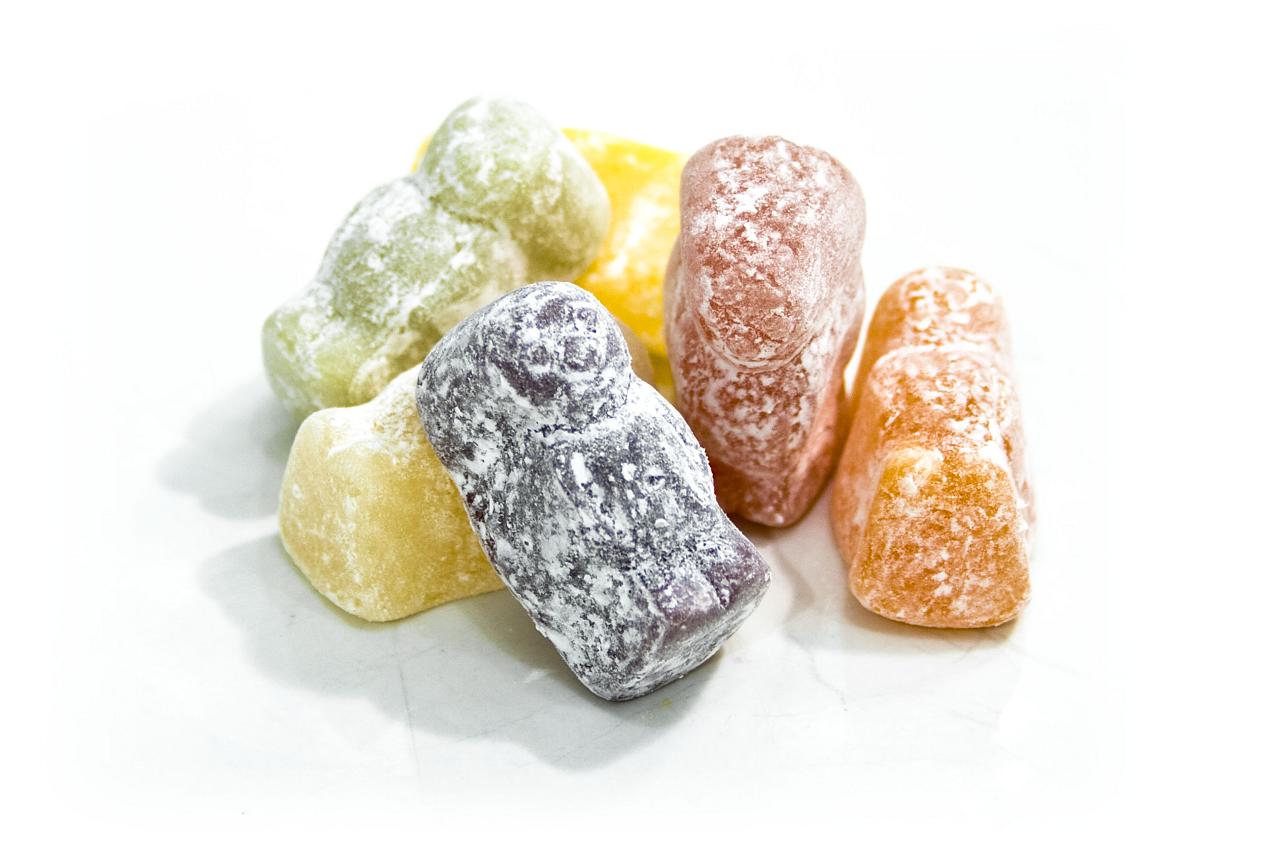
Jelly Babies: A Sweet and Nostalgic Treat
Introduction
Jelly babies, those beloved confectionery delights, have been a staple in British and Commonwealth culture for over a century. These colorful, fruit-flavored treats have captured the hearts of generations with their unique shape, chewy texture, and nostalgic charm. In this comprehensive article, we delve into the fascinating world of jelly babies, exploring their history, production process, cultural significance, and enduring popularity.
A Brief History
The origins of jelly babies can be traced back to the Victorian era. In 1864, a confectioner named Francis Smith created a sweet treat inspired by the popular Turkish delight. He named his creation "jelly babies" due to their resemblance to swaddled infants. Initially, these treats were made with rosewater and gelatin, but over time, the recipe evolved to include various fruit flavors and colors.
Production Process
Jelly babies are made using a combination of sugar, corn syrup, gelatin, and flavorings. The process begins with boiling the sugar and corn syrup together to create a thick syrup. Gelatin, a protein derived from animal collagen, is then added to the syrup, which gives the jelly babies their characteristic chewy texture.
Once the gelatin has dissolved, the mixture is poured into molds shaped like babies. The molds are then placed in a cooling chamber, where the jelly babies set and solidify. After cooling, the jelly babies are removed from the molds and coated with a thin layer of vegetable oil to prevent them from sticking together.
Fruit Flavors and Colors
Jelly babies are available in a wide range of fruit flavors, including strawberry, raspberry, lemon, orange, and blackcurrant. Each flavor is associated with a specific color, which helps to distinguish them. For example, strawberry jelly babies are red, raspberry jelly babies are pink, and lemon jelly babies are yellow.
Cultural Significance
Jelly babies have become deeply ingrained in British culture. They are often associated with childhood memories, as they are a popular treat for children’s parties and school lunchboxes. Jelly babies have also been featured in numerous films, television shows, and books, further solidifying their place in popular culture.
Nostalgic Appeal
One of the key reasons for the enduring popularity of jelly babies is their nostalgic appeal. For many people, the taste and texture of jelly babies evoke fond memories of childhood. They are a reminder of simpler times, when life was less complicated and sweets were a source of pure joy.
Health Considerations
While jelly babies are a delicious treat, it is important to consume them in moderation. They are high in sugar and calories, so excessive consumption can lead to weight gain and other health problems. It is recommended to enjoy jelly babies as an occasional indulgence rather than a regular part of your diet.
Variations and Innovations
Over the years, numerous variations and innovations on the classic jelly baby have emerged. Some manufacturers have introduced sugar-free and vegan jelly babies to cater to different dietary needs. Others have experimented with new flavors, such as cola, cherry, and mango.
Conclusion
Jelly babies are a beloved confectionery treat that has captured the hearts of generations. Their unique shape, chewy texture, and nostalgic charm have made them a staple in British and Commonwealth culture. Whether enjoyed as a childhood indulgence or a sweet reminder of simpler times, jelly babies continue to bring joy and delight to people of all ages.
